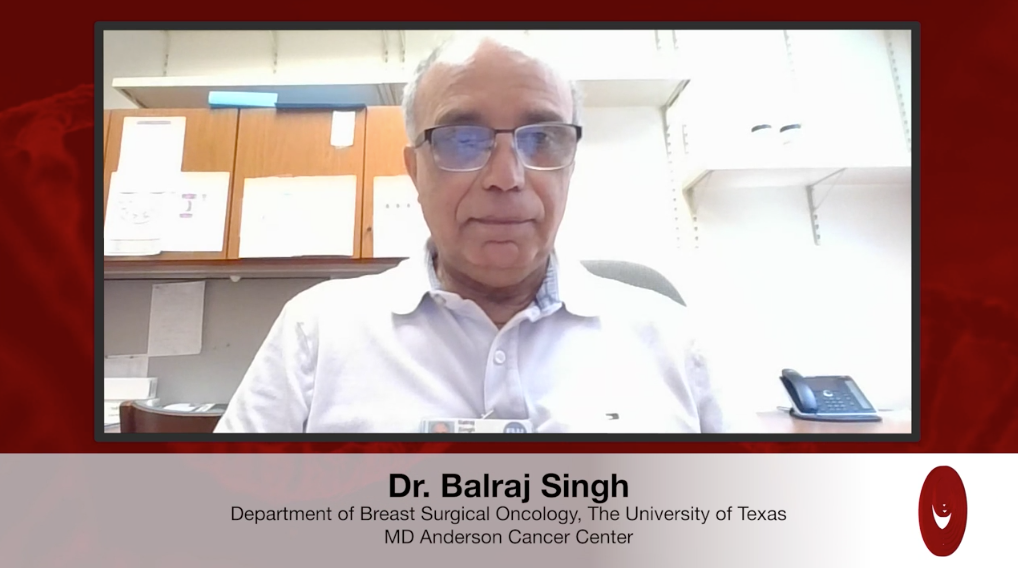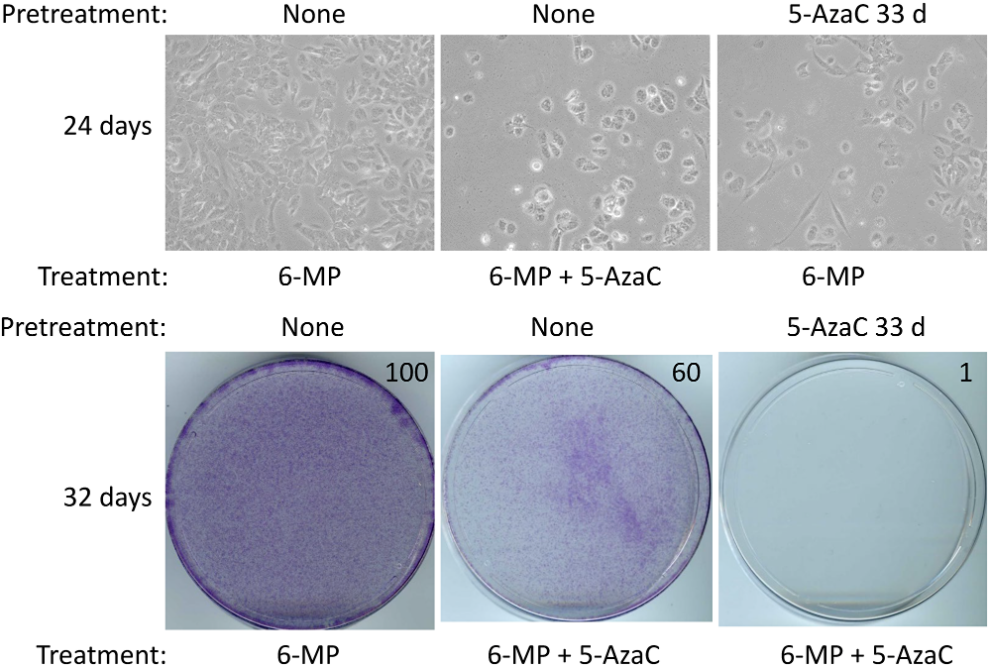Dr. Balraj Singh from the University of Texas MD Anderson Cancer Center, describes a recent research paper he co-authored that was published by Oncotarget, entitled, “Inhibition of resistant triple-negative breast cancer cells with low-dose 6-mercaptopurine and 5-azacitidine.”
Behind the Study is a series of transcribed videos of researchers elaborating on their oncology-focused research published by Oncotarget. Visit the Oncotarget YouTube channel for more insights from outstanding authors.
—
My name is Balraj Singh. I’m at MD Anderson Cancer Center in Houston, Texas.
I’m going to talk about our paper published in Oncotarget entitled, “Inhibition of resistant triple-negative breast cancer cells with low-dose 6-mercaptopurine and 5-azacitidine.”
As a background, our major goal is to improve therapy options in resistant cancer, such as TNBC and inflammatory breast cancer. It will involve overcoming deep, intrinsic resistance, which is caused by rare but adaptable cancer cells that can survive all the selection pressures in the body, often in quiescence. Our specific objective is to develop a more predictive cell culture model of resistance for evaluating therapies. A big limitation of cancer cell lines in cell culture is that artificially rich culture medium promotes polyphenism in most cells that are not fit to survive in the body. To address this limitation, we subject the aggressive TN IBC cell lines to severe metabolic challenge by switching them to a glutamine free medium for several weeks. This selection works well, eradicating more than 99.9% cells within few days. Rare cells survive in quiescence for several weeks. And then at three to five weeks, they begin to proliferate yielding colonies and some cells can then grow indefinitely.
Interestingly, cell lines developed from more aggressive disease, such as TN IBC, fare much better under this challenge than other TNBC cell lines, such as MDA-231. Surprisingly, the cells selected in this manner are not only metabolically adaptable, but they have a variety of adaptability traits. Briefly, they are resistant to chemotherapy drugs, highly tumorigenic in nude mice. And importantly, they metastasize to multiple organs in nude mice, such as lung, skin, brain, and at the molecular level, they are more stem-like based on the gene expression, which indicates high epithelial to mesenchymal transition. They carry a variety of genomic and transcriptomic alterations and post transcriptional RNA modifications. Our priority is to investigate non-cytotoxic drugs that would overcome therapy resistance. For realistic ABE evaluation, we test low doses of drugs for long periods to determine whether the resistant cells are being inhibited or modified from resistant to sensitive.
How did we choose the drugs that we evaluated in this study? We have found that RNA modifications such as alternate RNA splicing, and a variety of base modifications affecting messenger RNA, ribosomal RNA, and tRNA. We are seeing many of these modifications in these resistant cells, and so we think that they may be playing important role in the resistance phenotype, particularly their persistence in quiescence. So since there are many RNA based modifications, instead of targeting individual modifications, we chose broadly active, rapid nuclide analogs that may counter the effects of many of these modifications simultaneously. Looking for relatively safe drugs, at low dose, we chose 6-MP and 5-azacitidine, which are purine and pyrimidine analogs respectively. 6-MP is a common drug used in many autoimmune diseases, such as ulcerative colitis, and it has excellent safety profile, and also it can keep the disease in remission for long times.
5-azacitidine is used as a maintenance drug in leukemia. Again, indicating that the low dose may be safe. Besides safety, these clinical studies indicate that these drugs may affect stem-like cells since they cause remission. In all these diseases as well, the stem-like cells are the root cause of the disease, and they need to be controlled for getting the remission. We found that a long treatment with low dose 6-MP inhibits resistant breast cancer cells in our model. It’s analogous to the situation in ulcerative colitis where 6-MP takes several weeks for it to cause remission. Further, a prior treatment with 5-azacitidine sensitized these cells to inhibit with 6-MP. So these results indicate that if one drug is not enough, both drugs could be combined.
Finally, when the cells that are surviving after treatment with one drug or both drugs, we wanted to know whether they are sensitive to the chemotherapy drugs or not. And what we found is that, as compared to the untreated cells, they are more sensitive. So overall our results indicate that low dose 6-MP may be a good candidate for clinical evaluation, to halt relapse in high risk TNBC and IBC. It may also be an attractive drug for combining with immune checkpoint blocking. Immune checkpoint blocking, this is increasingly being used in TNBC. The problem is it causes a lot of autoimmunity type of reactions, so results are not obtained. The benefit that the immune checkpoint blockade could be achieved is hindered by the autoimmunity. So 6-MP may proactively inhibit the development of autoimmunity, besides inhibiting stem like cancer cells, thus improving the outcomes from immune checkpoint blocking.
Finally, besides the specific evaluation, this paper provides proof of concept that this is a good approach for investigating deep intrinsic resistance and ways to overcome it. Next, we will test the concept in other cancers beside breast cancer. We will evaluate compounds like 6-MP in combination and with immune checkpoint blockade. And as I said, since immune checkpoint blockade is being very widely used in many different cancers, and we are hoping that these studies will lead to clinical trials.
Finally, a word about Oncotarget. We have published three papers in Oncotarget. We have had very positive experience. The journal provided fair, good quality, fast review for the papers. And importantly, it allows us to present the work the way we see it.
Click here to read the full study published by Oncotarget.
Breast cancer playlist on YouTube
Special Collection on breast cancer
ONCOTARGET VIDEOS: YouTube | LabTube | Oncotarget.com
—
Oncotarget is a unique platform designed to house scientific studies in a journal format that is available for anyone to read—without a paywall making access more difficult. This means information that has the potential to benefit our societies from the inside out can be shared with friends, neighbors, colleagues and other researchers, far and wide.
For media inquiries, please contact media@impactjournals.com.

